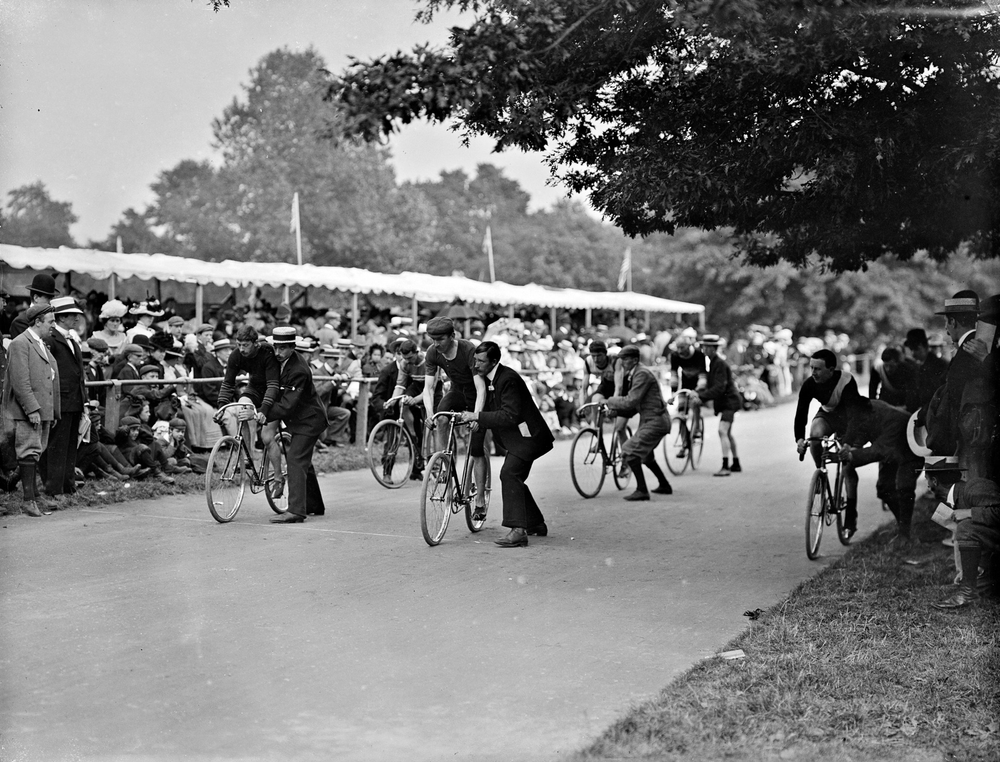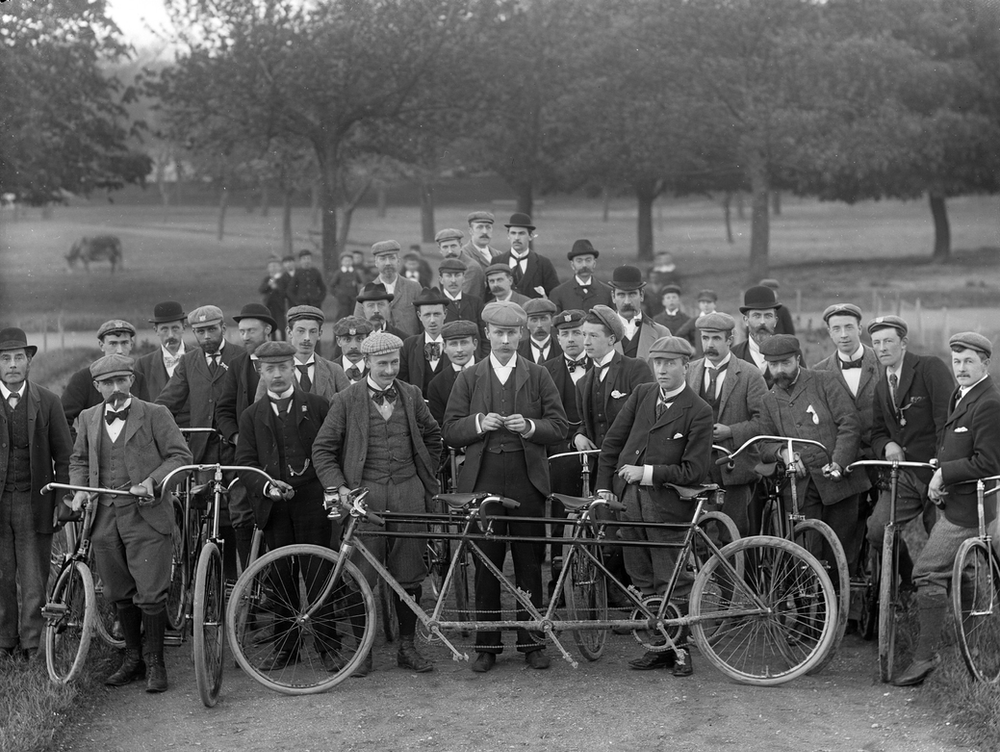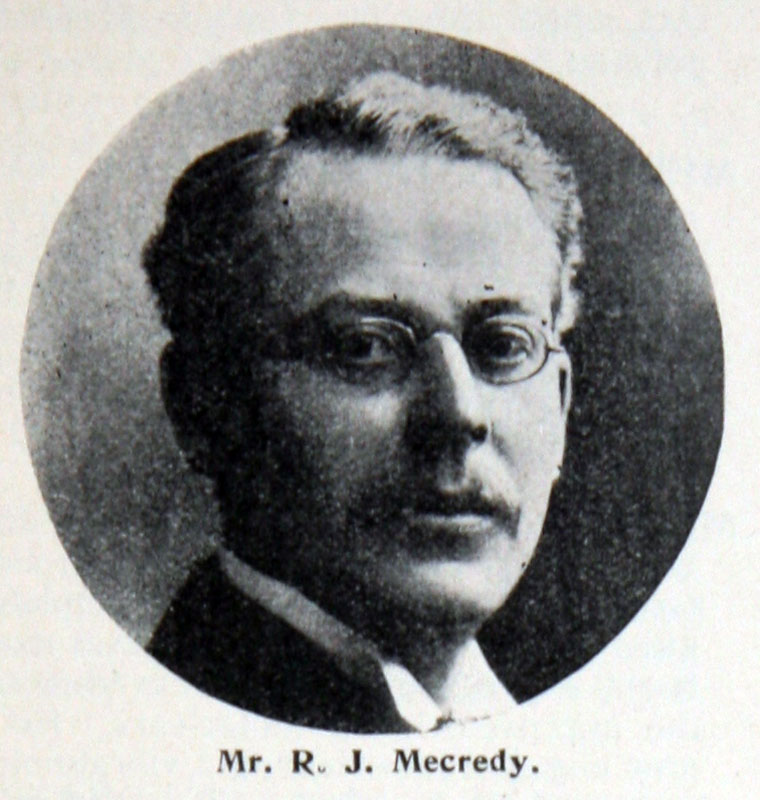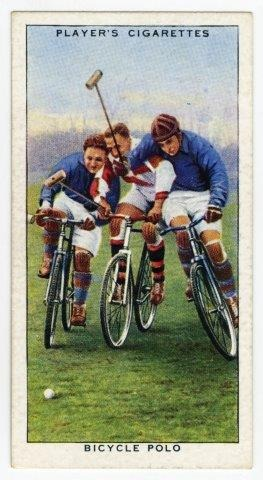

The sport of cycling has a long tradition in Waterford city and county. Some believe that the first known cycle club in Ireland was the Dungarvan Ramblers established in 1869 (in fact they would appear to be the third behind Dublin’s Amateur Cycling Club and the Earlsfort Terrace Machinery Court Club with its Dungarvan counterpart formed in June 1870). Nevertheless this predated the formation of a national body to govern the sport by around 15 years. The Irish Cycling Association (ICA) was created in 1884. However, more certain is that Dungarvan would continue to be at the forefront of the development of competitive cycling by staging Ireland’s first bicycle race for a challenge cup in September 1869. Waves would also be made in Waterford city when in August 1874 two members of the Waterford Ariel Bicycle Club, R.W. Rose and W. Carden cycled from Waterford to Wexford to attend the Royal Agricultural Society’s show making newspaper headlines as the Gentle County could ‘boast of bicycle feats second to none in Ireland’ as noted by the Waterford Standard.
The growth in popularity of the sport in Waterford city in the 1890s saw the Waterford Bicycle Club compete across the island in search of silverware and attempting to promote the sport in their own area. It was formed in January 1880 by solicitor J.B. Cherry at his home on William Street. A male dominated pastime till the 1890s saw races from Waterford to Tramore being particularly popular. The successful club was frequented by figures such as Laurence A. Ryan, mayor of the city from 1880 to 82. The late 80’s saw members of the Urbs Intacta Cycling Club (formed in 1881 but continually hampered by the Irish weather in staging events) such as Dr. George Mackesy and W.G.D. Goff join the club.

The 11th August 1891 saw a ‘cycling carnival’ staged in Waterford in what the Munster Express noted as a date that ‘will be memorable in the history in the South of Ireland as the first occasion of a visit from English cracks.’ An English group made up of Osmond (described as Champion of the World at all distances), Adams (London), Edwards (London), Jones, Parsons and Mole (Polytechnic BC) to name a few while the home side numbered Arthur and Harvey DuCros, Mecredy, Martin (Dublin), McAdam (Limerick), Kenna, O’Callaghan, Fielding and Williamson. The meeting was to be staged on the New Track in the People’s Park as the event was being promoted by the Waterford Bicycle Club. The enclosure had been enlarged to accommodate thousands of spectators. Admission was priced at one shilling.
In previewing the race the Munster Express described the track as ‘measures four laps to the mile, has good long straights, and the surface is magnificent, while the trees and hillocks which surround it shelter it from the wind.’ Anticipation built in the expectation that not only would Irish records be lowered but that world records would be broken. The three men central to the attraction of the event were the English cyclists Adams, Jones and Osmond. They were described as ‘the fastest riders in the world’ and holding honours such as Adams, winner of the 25 miles’ Ordinary Championship of England; Jones, previous holder of the mile record; and Osmond, English champion of both the 5 and 50 miles distances. He was also the holder of all the world records from one to fifty while his time for the mile was noted as 2 minutes and 16 seconds.
Again the local papers promoted the event as:
The Waterford public will have a chance of seeing the best men in the world and the finest racing ever put before the public, and we trust that they will assemble in their thousands to welcome the visitors and to support the Club which has worked so hard to give this treat.
A previous cycling race in Tramore was described as taking ‘the blooming cake’ while this race between Ireland and English teams ‘will take the whole bakery’. Yet this doesn’t reflect the fact of the Tramore meeting being abandoned due to the failure of the English cyclists to show up for the race.

Even the competition among the Irish contingent was eagerly awaited as Arthur DuCros and Mecredy were going to slog it out for the bragging rights of best of the Emerald Isle. Mecredy had strong form going into the race though DuCros had the ‘Indian sign’ over him by winning each event in which the two competed. It was to be a busy year for the Galwayman R.J. Mecredy who invented the game of ‘bicycle polo’ which closely followed the rules of horse polo. The first match of which was held on the 4th October 1891 between Rathclaren Rovers and Ohne Hast Cycling Club at The Scalp in County Wicklow.

Local support was towards Williams of Annestown who was described as ‘a road rider of no mean order’ having won the Power’s medal in June covering a distance of 122 miles in 10 hours and 45 minutes. Yet there was an even more international dimension as Count Konstantin Norbert Stadnicki a Polish national who was an Irish cycling champion taking part in the race. Stadnicki was from Podolia, a predominantly Polish speaking area of the Russian Empire and was taught English by an Irish tutor. He was later educated at Beaumont College in Berkshire. It appears his love of cycling began while in Torquay in 1883 before moving to Ireland to study engineering at the Royal University of Ireland in around October of the same year. His story and rivalry with Mecredy is brilliantly elaborated by the historian Brian Griffin, formerly of Bath Spa University, in The Boneshaker: The Journal of the Veteran Cycle Club.
The course for the meet, the New Track at the People’s Park, was a gift from Mr. Goff to the Waterford Bicycle Club and was considered to be one of the best in Ireland.
Yet it was noted that:
The last of the English Championships for 1891 has passed, and the Irish riders have not succeeded in winning even one. One of the causes of the recent ill-success of those to whom was allotted the arduous task of bearing the Irish standard lies in the fact that there is not in Dublin a track on which men can acquire the form requisite to compete successfully against such a highly-trained mettlesome flyer as Osmond.
Certainly the financial support from figures like Goff was central to the development of the sport in Waterford. Two years after gifting the track he funded the building of a club pavilion, dressing room and grandstand that could hold up to 500 people in 1892. There is also the Goff Challenge Shield, a solid-silver trophy which was estimated to be worth forty guineas.
From all of this you can see that Waterford was certainly a hot bed of cycling. As for the race results of the 11th August 1891 we will follow the time honoured tradition of L’Auto detailing the early years of the stage finishes of the Tour de France by publishing the results at a later date with some colour. For more on cycling in Waterford for the meantime it’s worth consulting the Decies journal of 2019 where Brian Griffin contributed a detailed article on the sport in the city and county in the Victorian and Edwardian eras. One piece of information that piqued my interest was Waterford could boast around the same time to having the biggest and heaviest cyclists in the world a Michael Manning reaching six feet in height and weighing around twenty-two stone. Family connections? No comment but if anyone has seen me cycling the comparison makes sense.


